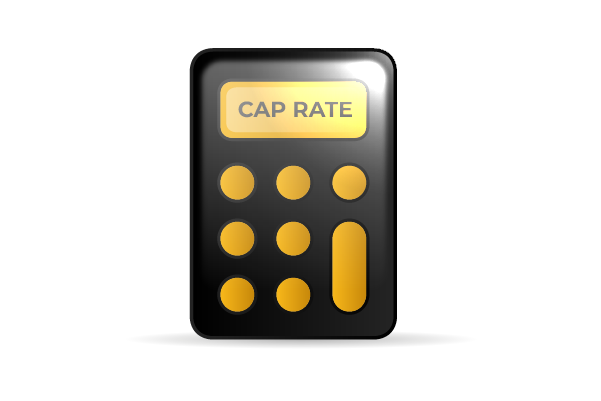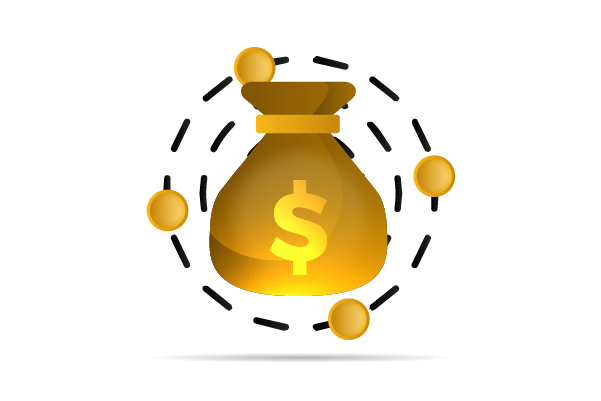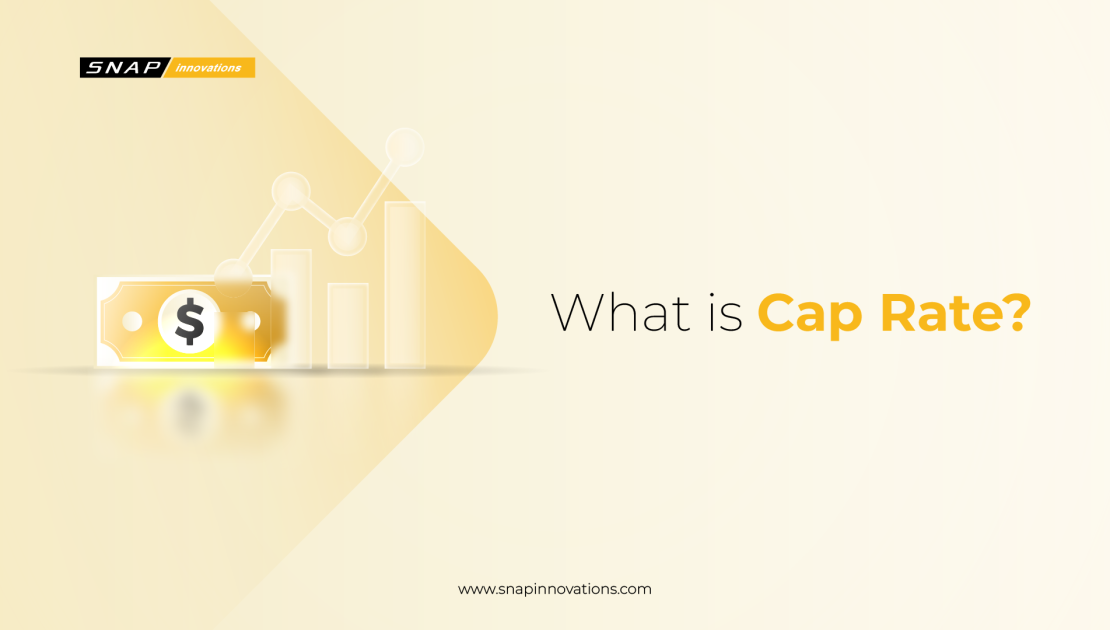In the dynamic world of real estate investing, where opportunities and risks abound, one cannot overstate the importance of grasping key financial metrics. Among these, the capitalization rate, affectionately known as the cap rate, stands as a beacon for astute investors seeking to make sound investment decisions. In this comprehensive guide, we will embark on a journey to unravel the intricacies of cap rates, uncover their profound significance, and offer practical insights tailored for both seasoned investors looking to fine-tune their strategies and newcomers eager to explore the real estate terrain.
The cap rate, at its core, is a fundamental metric that allows investors to gauge the profitability and potential risk of a specific property investment. It is a percentage value that provides a swift and informative snapshot of the return on investment (ROI) a property can deliver. To compute the cap rate, you need two critical pieces of information: the property’s net operating income (NOI) and its current market value. Understanding how to interpret this metric and utilize it effectively can mean the difference between a lucrative investment and a costly mistake. So, let’s embark on this enlightening journey through the realm of cap rates and equip ourselves with the knowledge to navigate the diverse landscapes of real estate investment.
What is Cap Rate?
The capitalization rate, or cap rate, is a fundamental metric used by real estate investors to assess the profitability and risk associated with a specific property. It is expressed as a percentage and provides a quick snapshot of the potential return on investment (ROI) for a property. To calculate the cap rate, you need two essential pieces of information: the property’s net operating income (NOI) and its current market value.
Calculating Cap Rate:
Cap Rate = (Net Operating Income / Current Market Value) x 100%
Let’s break down these components to gain a better understanding:
Net Operating Income (NOI):
NOI represents the income generated by the property after deducting all operating expenses, excluding mortgage payments. These expenses typically include property taxes, insurance, maintenance, and property management fees.
Current Market Value:
The market value of a property is the amount it would sell for in the current real estate market. It is determined by factors such as location, property type, demand, and comparable property sales in the area.
The Importance of Cap Rate
The cap rate serves as an invaluable compass for real estate investors, aiding them in making well-informed decisions. One of its most noteworthy attributes is its ability to provide a swift and efficient means of evaluating the profitability of a potential investment. In essence, it offers investors a quick litmus test, helping them ascertain whether a property is worth their time and capital.
When cap rates are high, it suggests the potential for more substantial returns, enticing investors with the prospect of a lucrative venture. Conversely, lower cap rates may indicate that the property may not yield the desired financial outcomes, prompting investors to explore alternative options.
This immediate assessment capability empowers investors to efficiently filter through numerous investment opportunities, saving them time and enabling them to focus their efforts on properties that align with their financial objectives.
Read More: Black Market: Understanding Its Impact and Consequences
Moreover, the cap rate plays a pivotal role in the realm of risk assessment, guiding investors towards properties that match their risk tolerance. The inherent connection between cap rates and risk is a cornerstone of its importance. Properties situated in areas boasting higher cap rates often come with an inherent level of risk due to factors such as economic volatility or location-specific challenges.
Conversely, properties in stable markets with lower cap rates tend to be viewed as less risky investments. Therefore, the cap rate serves as a powerful risk indicator, allowing investors to tailor their investment strategy to match their appetite for risk.
By having this tool at their disposal, investors can meticulously evaluate the risk-reward ratio of each property, ensuring their portfolio aligns harmoniously with their financial aspirations and risk tolerance. Ultimately, the cap rate empowers investors with the ability to make choices that best suit their investment goals while simultaneously considering the level of risk they are willing to undertake.
The Factors Influencing Cap Rates
 Now that we have a solid understanding of what cap rates are, let’s dive into the factors that can influence them:
Now that we have a solid understanding of what cap rates are, let’s dive into the factors that can influence them:
1. Location
Location is a critical factor in determining cap rates. Properties situated in high-demand, prime locations are often seen as less risky investments, leading to lower cap rates. These areas are typically characterized by robust economic activity, strong employment rates, and high tenant demand. Investors are willing to accept a lower return (cap rate) because the likelihood of property value appreciation and stable rental income is higher. The stability and predictability of returns in these areas are key attractions for investors.
On the flip side, properties in less desirable locations usually have higher cap rates. These areas might be characterized by economic challenges, lower tenant demand, or higher vacancy rates. The increased perceived risk in these locations stems from factors such as less stable rental income, potential for depreciation in property value, and higher chances of tenant turnover. As a result, investors expect a higher return on their investment to compensate for these risks, leading to higher cap rates.
2. Property Type
The type of property is another significant factor in the determination of cap rates. Commercial properties, such as office buildings, retail spaces, or industrial facilities, usually have lower cap rates compared to residential properties like apartments or single-family homes. This variation is often due to the different risk profiles and income potentials of these property types. Commercial properties often offer longer lease terms and can attract stable, corporate tenants, which provides a consistent income stream and reduces the risk for investors.
Residential properties, while potentially offering higher cap rates, come with their own set of challenges such as shorter lease terms, higher tenant turnover, and variable maintenance costs. These factors can introduce more uncertainty and risk, which is why investors might seek a higher return (higher cap rate) on these types of investments. Additionally, the residential market can be more sensitive to economic downturns, affecting occupancy rates and rental incomes.
3. Market Conditions
Explanation: Cap rates are highly sensitive to overall market conditions. During a booming real estate market, property values tend to rise, and the demand for investment properties increases. This heightened demand can lead to a decrease in cap rates, as investors are willing to pay more for properties, expecting future appreciation in value and a strong rental market. The optimism in the market during such periods leads to a compression of cap rates as the price paid for properties increases relative to the income they generate.
Conversely, in a market downturn, cap rates might increase. Economic uncertainties, reduced property values, and potentially lower rental incomes contribute to this trend. In such scenarios, properties are perceived as riskier investments, prompting investors to demand a higher return for the increased risk they are taking on. This increase in cap rates reflects the cautious approach of investors who seek higher yields to offset the potential decrease in property values and uncertainties in income streams.
4. Property Condition
Explanation: The physical condition of a property significantly impacts its cap rate. Well-maintained and updated properties are often seen as less risky investments. They are more likely to attract and retain tenants, which leads to a stable income stream. This stability is a critical factor for investors, as it reduces the risk of income disruption due to vacancies or major repairs. Consequently, investors might accept lower cap rates for such properties, considering them safer, long-term investments.
In contrast, properties in poor condition generally come with higher cap rates. The increased cap rate compensates for the higher risk associated with these properties, which might include more frequent maintenance issues, challenges in attracting and retaining tenants, and potential for longer vacancy periods. Investors considering such properties factor in the additional costs and risks associated with bringing the property up to a desirable condition or dealing with ongoing maintenance issues, thus requiring a higher return on their investment.
Evaluating Cap Rate and Risk
Now that we understand the factors influencing cap rates, let’s explore how investors can use this metric to assess risk and make informed decisions.
1. Risk Tolerance
Investors need to align their risk tolerance with the cap rates of potential properties. Higher cap rates usually indicate higher risk but also the potential for higher returns. Investors who are comfortable with more risk and are seeking greater returns may find these properties attractive. Such investments often come with uncertainties like variable tenant occupancy, potential for significant maintenance, or fluctuating rental incomes.
Conversely, more risk-averse investors may lean towards properties with lower cap rates. These properties typically represent more stable investments, often located in prime areas with consistent tenant demand and rental incomes. The trade-off for this stability is a lower return on investment. Understanding personal risk tolerance is crucial in guiding investment decisions, ensuring that the chosen properties align with an investor’s comfort level and financial objectives.
2. Market Research
Conducting thorough market research is vital for understanding local real estate dynamics. This research should include an analysis of historical cap rates in the area, giving insights into how properties have performed over time. By comparing the current cap rate of a property to historical averages, investors can gauge whether the property is priced correctly and assess the potential risk and return. Market research should also extend to understanding factors like local economic growth, employment rates, and future development plans, which can all impact real estate values and cap rates.
Understanding the market helps investors identify whether a property’s cap rate is a result of current market trends or specific to the property itself. It also aids in predicting potential shifts in the market that could affect the investment’s future performance.
3. NOI Analysis
A critical aspect of evaluating cap rates is a detailed analysis of the property’s net operating income (NOI). Accurate calculation of NOI is essential, as it directly impacts the cap rate. Investors should thoroughly review all income sources and expenses related to the property. Identifying opportunities to increase income (such as raising rents or reducing vacancies) or decrease expenses (through cost-effective management or maintenance strategies) can significantly improve the property’s cap rate.
This analysis helps in understanding the efficiency of the property’s operation and its potential for improvement. A property with a high cap rate but with clear opportunities to increase NOI might be a more favorable investment compared to a property with a lower cap rate but limited scope for improvement.
4. Exit Strategy
An investor’s exit strategy plays a crucial role in evaluating cap rates. For those planning a long-term hold, a stable cap rate is often more desirable. Stability suggests a lower risk profile, which is typically preferred for long-term investments. These investors might prioritize properties in established areas with consistent demand and rental income.
For short-term investors or those looking for value-add opportunities, properties with higher cap rates might be more appealing. These properties often have potential for significant value appreciation through renovations, repositioning, or changes in market conditions. While they carry higher risk, the potential for a substantial return upon exit can make them attractive for investors with this strategy. The choice of property should align with the investor’s timeline and objectives for the investment.
Strategies to Improve Cap Rates
 Investors keen on maximizing their returns often explore strategies to improve a property’s capitalization rate (cap rate). One effective approach is increasing rental income. This can be achieved by raising rents to market rates or introducing additional income streams like laundry facilities or parking fees, which can significantly boost the property’s net operating income (NOI). Another strategy is to decrease operating expenses. Carefully reviewing and identifying cost-saving opportunities, without undermining the property’s quality or safety, can effectively lower expenses and positively impact the NOI, subsequently improving the cap rate.
Investors keen on maximizing their returns often explore strategies to improve a property’s capitalization rate (cap rate). One effective approach is increasing rental income. This can be achieved by raising rents to market rates or introducing additional income streams like laundry facilities or parking fees, which can significantly boost the property’s net operating income (NOI). Another strategy is to decrease operating expenses. Carefully reviewing and identifying cost-saving opportunities, without undermining the property’s quality or safety, can effectively lower expenses and positively impact the NOI, subsequently improving the cap rate.
Additionally, renovation and upgrades are powerful tools in enhancing a property’s appeal and market value. Strategic improvements, whether cosmetic or structural, can lead to increased rental rates and property value, contributing to an improved cap rate and potentially a higher return on investment (ROI).
Lastly, strategic financing plays a critical role. Investors should consider their financing options meticulously. Actions like refinancing at a lower interest rate or extending the terms of a loan can reduce mortgage-related expenses. This reduction in costs can directly improve the property’s cap rate, making the investment more lucrative and attractive in the long run. These combined strategies, focused on both increasing income and reducing expenses, are key to optimizing the performance of a real estate investment.
Common Misconceptions About Cap Rates
Before concluding our exploration of capitalization rates (cap rates), it’s crucial to clarify some common misconceptions that often mislead investors. A major misunderstanding is considering the cap rate as the sole indicator of an investment’s quality. While significant, cap rates should not be the only metric guiding investment decisions.
For instance, properties in stable, high-demand areas may have lower cap rates but still represent valuable investments due to their reduced risk and consistent income streams. Additionally, the notion that cap rates are fixed is misleading. In reality, they fluctuate over time influenced by market conditions, property improvements, or changes in expenses. For example, economic growth in an area or enhancements in property condition can alter cap rates, necessitating regular reevaluation by investors.
Read Next: Debt to Asset Ratio: Continue Adding for Financial Success
Another widespread misconception is the assumption that higher cap rates automatically translate to better deals. This perspective overlooks the fact that higher cap rates often indicate higher risks. Such properties might be in less desirable areas, have greater maintenance needs, or experience higher vacancy rates, all contributing to increased investment risk. It’s imperative for investors to investigate why a property has a high cap rate, assessing factors like location, property condition, and market dynamics.
Understanding these elements is critical to discern whether a high cap rate is a sign of a potentially lucrative investment or a venture with substantial risks. Effective real estate investing requires a balanced approach that considers the cap rate in conjunction with other critical factors to ensure a comprehensive evaluation of the investment’s potential.
Conclusion
In conclusion, the capitalization rate, or cap rate, is a vital tool for real estate investors to evaluate potential investments, assess risk, and make informed decisions. Understanding the factors that influence cap rates, conducting thorough market research, and considering strategies to improve cap rates are essential steps in maximizing returns and achieving long-term success in real estate investing.
So, whether you’re a seasoned investor or just starting your journey in the world of real estate, remember that cap rates are your compass in navigating the complexities of the market. Happy investing!


